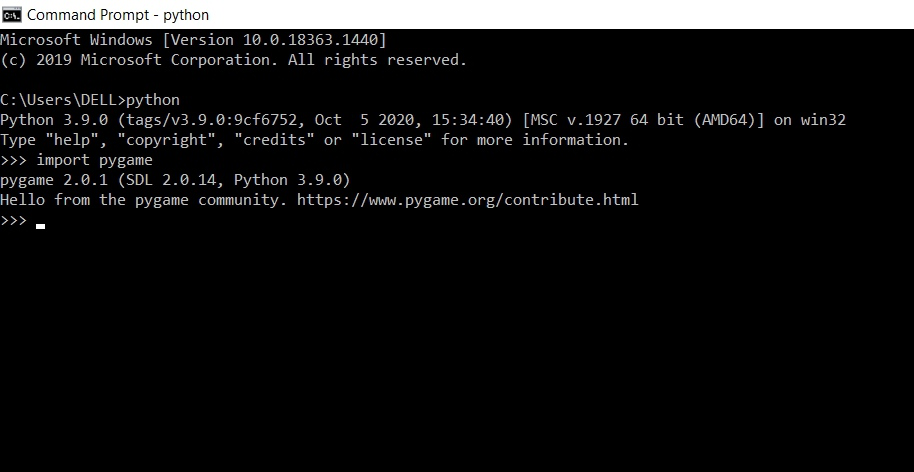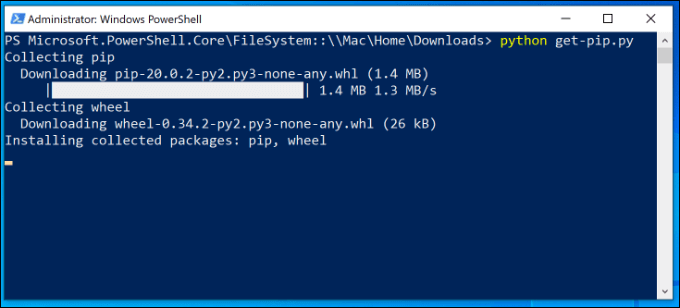

- #UPGRADE TO PYTHON 2.7.9 HOW TO#
- #UPGRADE TO PYTHON 2.7.9 INSTALL#
- #UPGRADE TO PYTHON 2.7.9 UPDATE#
- #UPGRADE TO PYTHON 2.7.9 UPGRADE#
- #UPGRADE TO PYTHON 2.7.9 SOFTWARE#
To ask any questions relating to this topic, please take advantage of the feedback form below. 9 and later (on the Python2 versions), and Python 3.4 and later (on Python3 versions) are shipped with pip by default.
#UPGRADE TO PYTHON 2.7.9 INSTALL#
To install pip, follow the official pip installation guide - this will automatically install the latest version of setuptools. To see if pip is installed, open a command prompt and run.
#UPGRADE TO PYTHON 2.7.9 HOW TO#
In this article, we showed you how to install PIP on mainstream Linux distributions. Python 2.7.9 and later (on the python2 series), and Python 3.4 and later include pip by default. Python-mode – A Vim Plugin to Develop Python Applications in Vim Editor.How to Use Python ‘SimpleHTTPServer’ to Create Webserver or Serve Files Instantly.Getting Started with Python Programming and Scripting in Linux.Dive Deep Into Python Vs Perl Debate – What Should I Learn Python or Perl?.You may also like to read these following related articles about Python. Wheel Build wheels from your requirements.Ĭompletion A helper command used for command completion. Show Show information about installed packages.Ĭheck Verify installed packages have compatible dependencies.
#UPGRADE TO PYTHON 2.7.9 UPGRADE#
To see a list of all commands type: # pip helpįreeze Output installed packages in requirements format. CentOS 6.4 Upgrade Python 2.6.6 to Python 2.7.9, Programmer All, we have been working hard to make a technical sharing website that all programmers love. To install, uninstall or search new packages, use these commands. My first though was to upgrade Python to at least 2.7.9, is something. Install PIP on openSUSE # zypper install python-pip #Python 2 The built in Python in mLinux 3.3.6 is Python 2.7.3 which does not provide TLS 1.2. Install PIP on Arch Linux # pacman -S python2-pip #Python 2 Install PIP on Fedora # dnf install python-pip #Python 2

So you need to enable the EPEL repository and then install it like this.
#UPGRADE TO PYTHON 2.7.9 SOFTWARE#
Unluckily, pip is not packaged in official software repositories of CentOS/RHEL. So how can I install the latest version of Python on the Python download page there is the source tarball, how can I use that to install it separately like having another folder in /usr/lib/ like python2.7.6 and make the python link in /usr/bin/ point to the new executable, or maybe upgrade the current version if it won't break anything.

To install pip in Linux, run the appropriate command for your distribution as follows: Install PIP On Debian/Ubuntu # apt install python-pip #python 2 The pip command has options for installing, upgrading and deleting packages, and can be run from the Windows command line. Note: We will run all commands as the root user, if you are managing your system as a normal user, then use the sudo command to get root privileges or you can as well configure your system to run sudo command without entering a password, it’s possible.

In this article, we will explain how to install PIP on mainstream Linux distributions. Suggested Read: How to Install Latest Python 3.6 Version in Linux Pip (recursive acronym for “ Pip Installs Packages” or “ Pip Installs Python“) is a cross-platform package manager for installing and managing Python packages (which can be found in the Python Package Index ( PyPI)) that comes with Python 2 >=2.7.9 or Python 3 >=3.4 binaries that are downloaded from . In this DigitalOcean article, we are going to talk about downloading and setting up Python (versions 2.7.6 and 3.3.3) without breaking the system's default 2.6 (or 2.
#UPGRADE TO PYTHON 2.7.9 UPDATE#
You can upgrade to a newer version of Python to solve this. Ubuntu 17.04 and older: The answer appears to be to add a third party repository: sudo add-apt-repository ppa:jonathonf/python-2.7 sudo apt-get update sudo apt-get install python2.7 python -version. This prevents urllib3 from configuring SSL appropriately and may cause certain SSL connections to fail. home/leandrotoledo/workspace/fisl-17-telegram-bot-com-python/python/env/local/lib/python2.7/site-packages/urllib3/util/ssl_.py:122: InsecurePlatformWarning: A true SSLContext object is not available. You can upgrade to a newer version of Python to solve this. This may cause the server to present an incorrect TLS certificate, which can cause validation failures. To list the versions of Python that are available to install, in your terminal window or an Anaconda Prompt, run. home/leandrotoledo/workspace/fisl-17-telegram-bot-com-python/python/env/local/lib/python2.7/site-packages/urllib3/util/ssl_.py:318: SNIMissingWarning: An HTTPS request has been made, but the SNI (Subject Name Indication) extension to TLS is not available on this platform. Viewing a list of available Python versions. Got warnings from urllib3: SNIMissingWarning, InsecurePlatformWarning Configuration It's working as intended Actual behaviour


 0 kommentar(er)
0 kommentar(er)
